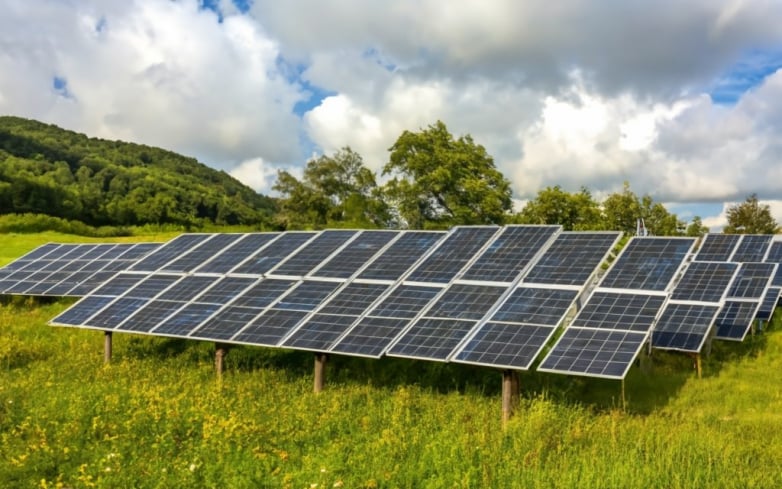Silver Nanoparticles Boost Efficiency of Perovskite Solar Cells
- University of Sheffield researchers boost perovskite solar cell efficiency by adding silver nanoparticles to the electron transport layer, achieving a record-breaking 14.3% power conversion efficiency.

Researchers at the University of Sheffield have developed a new method to improve the efficiency of perovskite solar cells by using silver nanoparticles in the electron transport layer (ETL). The addition of silver nanoparticles increased the recombination rate and enhanced charge carrier transfer and extraction, resulting in a power conversion efficiency increase from 13.4% to 14.3%. These perovskite solar cells, fabricated completely in air with nanocomposite oxide layers, are one of the first examples and exhibit the highest reported efficiency. The researchers believe that this approach has general applicability in other fields, such as LEDs and electronic devices.
The team used a commonly adopted approach for the development of organic and dye-sensitized PV cells, creating composite transport layers with metal nanoparticles. The nanoparticles act as antennae, trapping light and exciting electrons into the conduction band more efficiently. The researchers tested their approach in a perovskite solar cell with an indium tin oxide substrate, SnO2-based ETL, perovskite absorber, poly-triarylamine hole transport layer, and an Ag metal contact. The Ag nanoparticles were deposited on the ETL via chemical synthesis, resulting in increased cell efficiency.
How did researchers at the University of Sheffield improve the efficiency of perovskite solar cells?
- The researchers at the University of Sheffield improved the efficiency of perovskite solar cells by using silver nanoparticles in the electron transport layer (ETL).
- The addition of silver nanoparticles increased the recombination rate and enhanced charge carrier transfer and extraction.
- This resulted in a power conversion efficiency increase from 13.4% to 14.3%.
- The perovskite solar cells were fabricated completely in air with nanocomposite oxide layers.
- These cells are one of the first examples to exhibit the highest reported efficiency.
- The researchers believe that this approach has general applicability in other fields, such as LEDs and electronic devices.
- The team used a commonly adopted approach for the development of organic and dye-sensitized PV cells, creating composite transport layers with metal nanoparticles.
- The nanoparticles act as antennae, trapping light and exciting electrons into the conduction band more efficiently.
- The researchers tested their approach in a perovskite solar cell with an indium tin oxide substrate, SnO2-based ETL, perovskite absorber, poly-triarylamine hole transport layer, and an Ag metal contact.
- The Ag nanoparticles were deposited on the ETL via chemical synthesis, resulting in increased cell efficiency.
Also read
- Revolutionizing Solar Power: Tandem Cells on the Rise
- Boosting Perovskite/Organic Solar Cell Efficiency with New Strategy
- Revolutionizing Solar Energy: Key to Efficient Organic Cells
- Revolutionary Solar Cells Power Drone with Unprecedented Efficiency
- Unlocking Perovskite Secrets: Next-Gen Solar Cell Breakthrough
